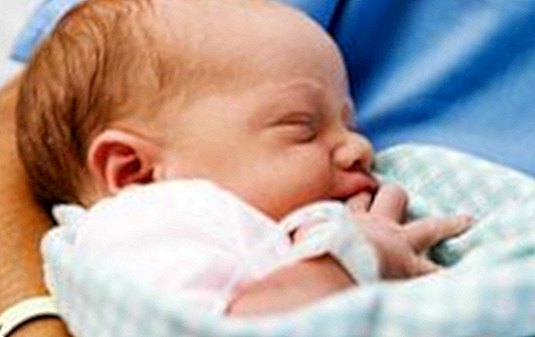Wishing Caesarean section: Dangerous trend


Gisele Bündchen is an exception. Not because she was with Leonardo DiCaprio or the best-selling model in the world. But because she gave birth to her son in the bathtub and not on an operating table.
The caesarean section is in line with the trend: Angelina Jolie does it, Claudia Schiffer too, Madonna and Victoria Beckham too. And even in Germany almost every third child sees the light of day directly through the maternal abdominal wallAccording to the Federal Statistical Office, around 644,000 women were hospitalized in 2009, 31.3 percent of them by caesarean section. Ten years ago, only every sixth child was born by caesarean section.
Sure, the pregnant women are getting older - more often there are complications that require a caesarean section in order not to endanger the health of mother and child. Many consider the caesarean section to be the safest form of childbirth. That this is not true, however, is evidenced by the analysis of more than 100,000 births, the results of which were published in the prestigious journal "The Lancet": Compared to vaginal delivery, there are more complications on the part of the mother during caesarean section. Anyone who gives birth to their child by caesarean section needs blood transfusions more often, has to be transferred more often to the intensive care unit, it is more often necessary to remove the uterus. The maternal mortality is higher than in the natural birth.
And that's not because the caesarean mothers were pregnant with an increased risk due to their age or other factors. The researchers clearly distinguished between a caesarean section on the basis of a so-called indication, that is, if there was a medical reason for this procedure (such as a breech position of the child), and a caesarean section without indication, also called Wunschkaiserschnitt. And the risks for the mother were higher even with the latter. Statistically, it would have been safer for these women to give birth naturally.
Therefore, the authors of the study conclude: Cesarean section only if there are actually medical reasons for this. The so-called Wunschkaiserschnitt, on the other hand, is rather extremely critical.
But what does any wish for the imperial cut mean? The Gmünder Ersatzkasse (GEK) published a large study in 2006 with the following result: Only two per cent of 1400 women who had been delivered by Caesarean section actually wanted to have their birth in the operating room.
Apparently, the word "desire cesarean section" in most cases rather expresses wishes of our health system, For purely economic reasons, a caesarean section for a hospital is quite desirable: the health insurance pays much more for this than for a natural birth. The procedure can also be planned better in terms of time and personnel and is cheaper for the clinic than hours or days of labor, possibly even on the weekends. Many physicians are also afraid of legal action, which causes some natural birth, but hardly a caesarean section.
Incidentally, one of the so-called medical indications, which is often claimed for a caesarean section, is "Fear of birth pains", This fear certainly knows every woman who expects a child: A birth is an unimaginable and therefore frightening event.
But that's exactly why it is important to educate expectant mothers that a caesarean section firstly brings certain complication risks. Secondly, while it guarantees a painless birth, the pain of the procedure comes after and surprise many women in their violence and duration. Because the GEK study also showed that many women felt very well informed about the course of the cutting birth - but not about their consequences.










